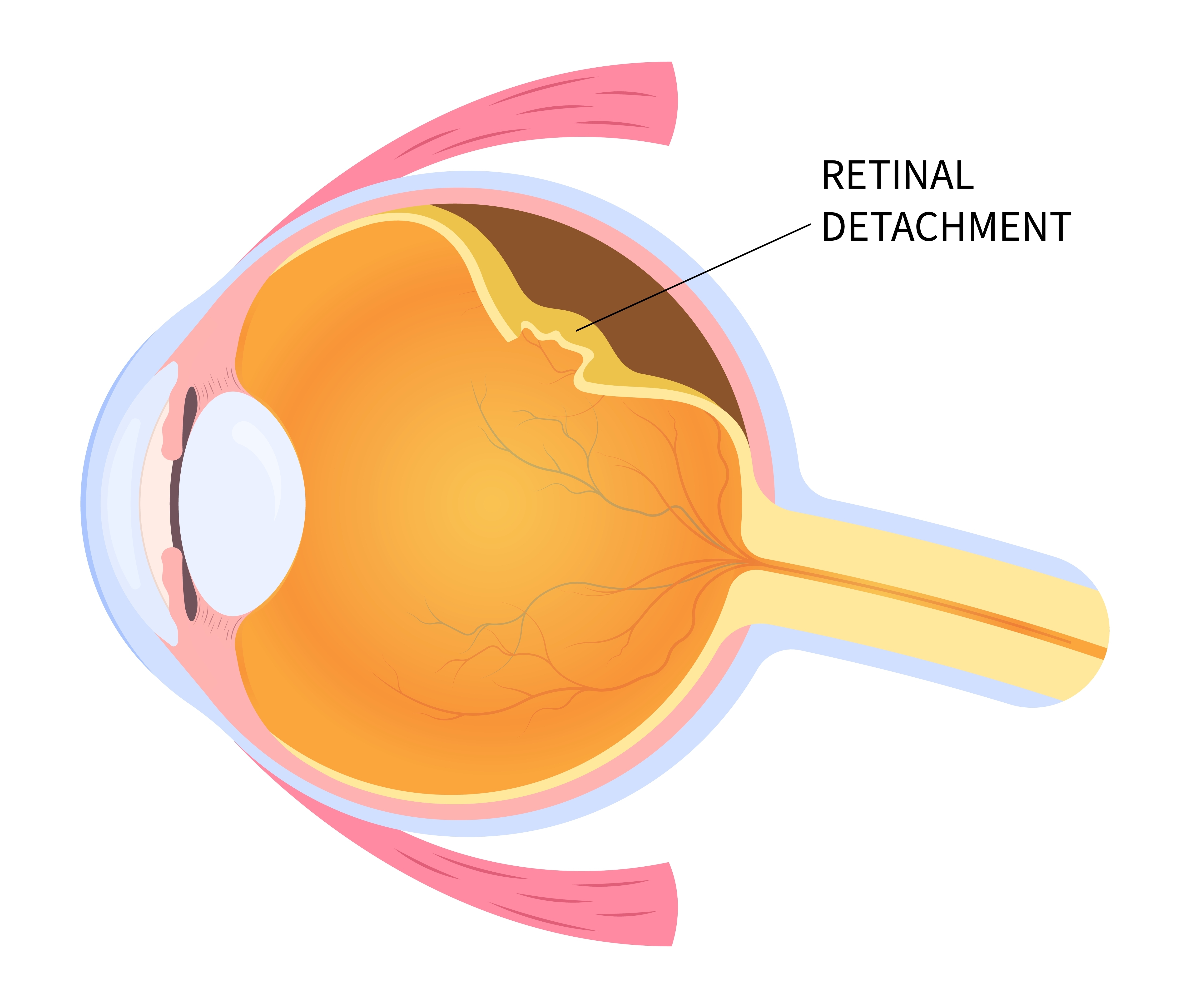
Retinal detachment is a serious eye condition that requires immediate medical attention. It occurs when the retina—a thin layer of light-sensitive tissue at the back of your eye—becomes separated from its underlying tissue. This separation disrupts the retina’s ability to process light signals, which are essential for clear vision. If left untreated, retinal detachment can lead to permanent vision loss.
What Is Retinal Detachment?
The retina plays a crucial role in vision by converting light into neural signals that are sent to the brain. Retinal detachment occurs when the retina is pulled away from its normal position, cutting off its blood supply and causing cells to die. This is a medical emergency, and prompt treatment is critical to saving your vision.
Common Causes of Retinal Detachment
While anyone can experience retinal detachment, certain factors increase your risk:
Aging: Retinal detachment is more common in individuals over 50.
Severe Myopia (Nearsightedness): People with high myopia are at a greater risk.
Eye Injury: Trauma to the eye can trigger detachment.
Family History: A genetic predisposition can increase the likelihood.
Previous Eye Surgery: Procedures like cataract surgery may elevate the risk.
Warning Signs to Watch For
Recognizing the early symptoms of retinal detachment can make the difference between preserving your vision and experiencing permanent loss. If you notice any of the following symptoms, seek immediate care:
Flashes of Light: Sudden, brief flashes in your peripheral vision may signal retinal tearing.
Floaters: An increase in dark spots, strings, or cobweb-like shapes floating in your vision.
Shadows or Curtain Effect: A dark shadow or curtain appearing across part of your visual field.
Blurred Vision: A sudden decrease in clarity that doesn’t improve with blinking.
Peripheral Vision Loss: A progressive narrowing of your side vision.
Why Prompt Treatment Is Crucial
Retinal detachment doesn’t improve on its own and requires urgent medical intervention. Delaying treatment can lead to irreversible damage and loss of vision. Common treatments include:
Laser Surgery: Used to seal retinal tears and prevent detachment.
Pneumatic Retinopexy: A bubble is inserted into the eye to reattach the retina.
Vitrectomy: A surgical procedure to remove the gel-like vitreous pulling on the retina.
Protecting Your Vision
By recognizing the early warning signs, you can take the critical first step toward preserving your eyesight. We’re here to provide the care and expertise you need to protect your vision. Acting quickly can make all the difference.
If you experience any symptoms of retinal detachment, contact Westside Vision Optometry immediately for guidance and support. Visit our office in Los Angeles, California, or call (424) 249-1957 to book an appointment today.





